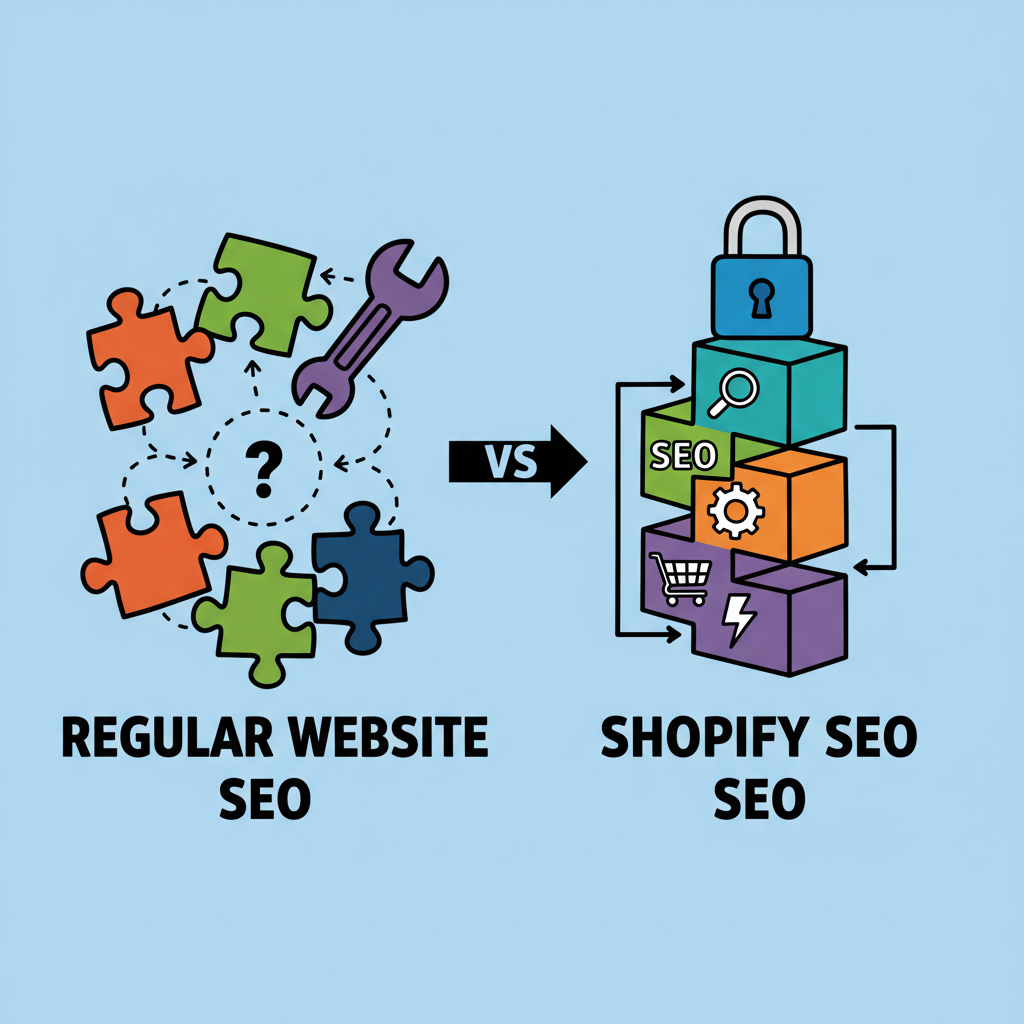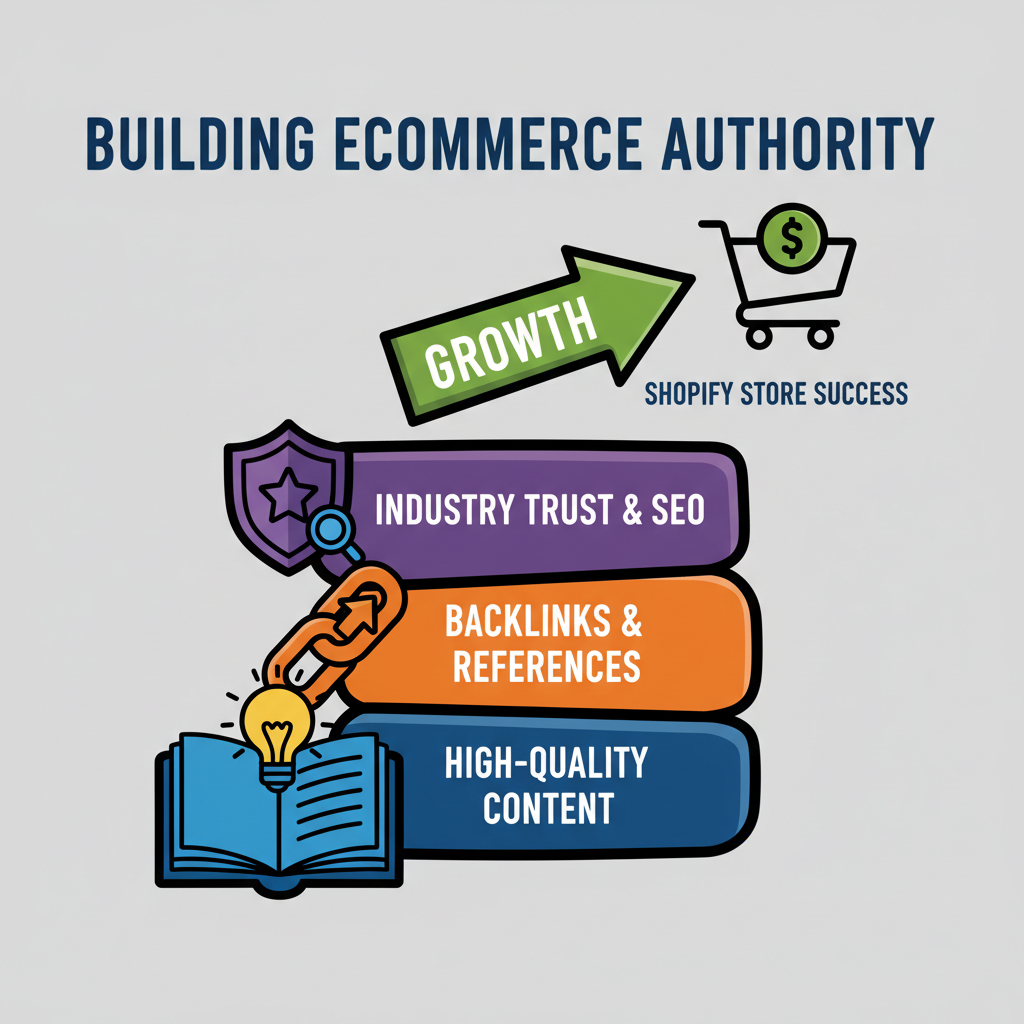What Makes Shopify SEO Different from Regular Website SEO?
Posted by
How to Do SEO for Shopify Website: The Complete 2024 Guide

Running a successful Shopify store requires more than just great products and attractive design. Without proper search engine optimization, your potential customers will never find your store among the millions of online retailers competing for their attention. The good news is that Shopify provides a solid foundation for SEO, but you need to know how to leverage its features effectively to maximize your organic visibility.
This comprehensive guide will walk you through every essential step to optimize your Shopify website for search engines. From technical setup to content optimization, you'll learn proven strategies that drive organic traffic and increase sales. Whether you're launching a new store or improving an existing one, these actionable techniques will help your Shopify website climb the search rankings and attract more qualified visitors.
What Makes Shopify SEO Different from Regular Website SEO?

Shopify SEO operates within a specific framework that differs from traditional website optimization. Unlike custom-built websites where you have complete control over every technical element, Shopify uses a structured approach that both simplifies and limits certain SEO activities.
The platform automatically handles many technical SEO fundamentals, such as generating XML sitemaps and creating mobile-responsive designs. However, this convenience comes with constraints. You cannot modify certain URL structures, and some advanced technical optimizations require workarounds or apps. Understanding these limitations helps you focus your efforts on the areas where you can make the biggest impact.
Understanding the fundamentals of SEO becomes crucial when working within Shopify's ecosystem. The platform's e-commerce focus means your SEO strategy must balance product discovery, category optimization, and content marketing while maintaining excellent user experience across all device types.How Do You Set Up Your Shopify Store's Technical SEO Foundation?
Technical SEO forms the backbone of your Shopify store's search performance. Start by accessing your store's preferences in the admin panel and ensure your store title and meta description accurately represent your business while incorporating your primary keywords naturally.
Configure your domain settings properly by using a custom domain instead of the default myshopify.com subdomain. This change significantly improves your brand credibility and SEO potential. Navigate to Online Store > Domains and either purchase a domain through Shopify or connect an existing one you own.
Enable SSL certificates, which Shopify provides automatically for all stores. This security feature not only protects customer data but also serves as a confirmed Google ranking factor. Verify that your store loads with "https://" and displays the security lock icon in browsers.
Set up Google Search Console and Google Analytics to monitor your store's performance. These free tools provide invaluable insights into how search engines crawl your site and how visitors interact with your content. Submit your sitemap (automatically generated at yourstore.com/sitemap.xml) to help Google discover and index your pages more efficiently.
Which Shopify SEO Apps and Tools Should You Use?
Selecting the right SEO tools can dramatically accelerate your optimization efforts. Several Shopify apps address specific SEO needs that the platform doesn't handle natively.
For comprehensive SEO management, consider apps like SEO Manager or Plug in SEO. These tools scan your store for common issues, provide optimization recommendations, and help implement structured data markup that makes your products more visible in search results.
Image optimization apps such as TinyIMG or Searchanise automatically compress your product images without quality loss, improving page load speeds. Since site speed directly impacts both user experience and search rankings, these tools provide excellent return on investment.
| Tool Category | Recommended Apps | Primary Benefits |
|---|---|---|
| SEO Analysis | SEO Manager, Plug in SEO | Technical audits, optimization recommendations |
| Image Optimization | TinyIMG, Searchanise | Faster loading, better user experience |
| Schema Markup | JSON-LD for SEO, SearchPie | Rich snippets, enhanced visibility |
| Page Speed | PageSpeed Monitor, Booster | Performance tracking, speed improvements |
How Do You Optimize Shopify Product Pages for Search Engines?

Product page optimization directly impacts your ability to rank for commercial keywords that drive sales. Each product page should target specific, relevant keywords while providing comprehensive information that helps both search engines and customers understand what you're selling.
Craft compelling product titles that include your target keywords naturally while remaining readable and appealing to customers. Avoid keyword stuffing, which can harm both your search rankings and conversion rates. Instead, focus on creating titles that accurately describe your products while incorporating terms your customers actually search for.
Write detailed, unique product descriptions that go beyond basic specifications. Include information about benefits, use cases, and features that matter to your target audience. Proper keyword research helps you understand exactly what terms your potential customers use when searching for products like yours.
How Should You Handle Product Images and Alt Text?
Optimize every product image with descriptive, keyword-rich alt text that accurately describes what the image shows. This practice improves accessibility for visually impaired users while helping search engines understand your visual content.
Use high-quality images that load quickly and provide multiple angles of your products. Compress images appropriately to maintain visual appeal while minimizing file sizes. Name your image files descriptively before uploading them, using hyphens to separate words (product-name-blue-large.jpg rather than IMG001.jpg).
Implement image galleries strategically, showing your products in use or providing detailed close-ups of important features. These additional images can rank in Google Image Search, creating additional traffic opportunities for your store.
What's the Best Way to Structure Your Shopify Store's Navigation and URLs?
Logical site structure helps both users and search engines navigate your store efficiently. Organize your products into clear, hierarchical categories that reflect how customers think about and search for your products.
Create a navigation structure that requires no more than three clicks to reach any product from your homepage. This approach improves user experience while ensuring search engines can crawl and index all your important pages effectively.
Shopify automatically generates URLs based on your product and collection names, but you can customize these in the "Search engine listing preview" section of each page. Keep URLs short, descriptive, and keyword-rich while avoiding unnecessary words or characters.
Design your collection pages to serve as valuable landing pages for category-level keywords. These pages should include descriptive text that explains what products visitors will find, why they might want them, and how your store serves their needs better than competitors.
How Do You Create SEO-Friendly Content for Your Shopify Blog?
Content marketing through blogging creates opportunities to rank for informational keywords that your product pages cannot target effectively. Your Shopify blog should address customer questions, provide valuable information, and demonstrate your expertise in your industry.
Develop a content strategy that covers the entire customer journey, from awareness-stage topics that introduce people to your industry to decision-stage content that helps them choose between specific products. This comprehensive approach captures traffic at multiple stages and guides visitors toward making purchases.
Creating an effective blog post template ensures consistency across your content while incorporating SEO best practices. Each blog post should target specific keywords, include internal links to relevant products or other blog posts, and provide genuine value to your readers.Focus on creating evergreen content that remains relevant and valuable over time. While trending topics can drive short-term traffic spikes, evergreen content provides consistent, long-term organic traffic growth that compounds over months and years.
How Can You Build Authority and Trust for Your Shopify Store?

Building domain authority requires consistent effort across multiple areas. Start by creating high-quality content that other websites want to reference and link to. This might include industry guides, research studies, or comprehensive resource pages that provide exceptional value to your target audience.
Implement customer review systems and display testimonials prominently throughout your store. Reviews not only improve conversion rates but also provide fresh, user-generated content that search engines value. Encourage satisfied customers to leave detailed reviews that include relevant keywords naturally.
Develop relationships with industry influencers, bloggers, and other businesses in your space. These relationships can lead to valuable backlinks, guest posting opportunities, and collaborative content that expands your reach. According to Moz's research on ranking factors, backlinks remain one of the strongest signals search engines use to determine page authority.
Ensure your store displays trust signals clearly, including security badges, return policies, contact information, and professional design elements. These factors influence both search engine trust and customer confidence in your business.
What Are the Most Common Shopify SEO Mistakes to Avoid?
Many Shopify store owners make preventable mistakes that limit their SEO potential. Duplicate content represents one of the most common issues, often occurring when the same product appears in multiple collections without proper canonical tags.
Neglecting mobile optimization can severely impact your search performance, as Google uses mobile-first indexing for all websites. Test your store's mobile experience regularly and ensure all features work smoothly on smartphones and tablets.
Ignoring site speed optimization costs both search rankings and sales. Large, uncompressed images, excessive apps, and poorly coded themes can slow your store significantly. Google's PageSpeed Insights tool provides specific recommendations for improving your store's loading times.
Failing to optimize for local search represents a missed opportunity for stores with physical locations or those targeting specific geographic areas. Implement local SEO strategies including Google My Business optimization and location-specific content when relevant to your business model.
How Do You Track and Measure Your Shopify SEO Success?
Monitoring your SEO progress requires tracking multiple metrics that indicate both search engine performance and business impact. Set up comprehensive analytics tracking that goes beyond basic traffic numbers to include conversion data, revenue attribution, and customer behavior patterns.
Track your keyword rankings for target terms, but focus more on overall organic traffic growth and the quality of that traffic. Understanding what makes organic traffic valuable helps you evaluate whether your SEO efforts translate into actual business results.
Monitor your store's technical health through regular SEO audits that identify crawl errors, broken links, missing meta tags, and other issues that could impact your search performance. Address these technical problems promptly to maintain your store's search engine accessibility.
Analyze your competitors' SEO strategies to identify opportunities and gaps in your own approach. Tools like SEMrush or Ahrefs can reveal which keywords your competitors rank for, what content performs well in your industry, and where you might find untapped ranking opportunities.
Conclusion
Optimizing your Shopify website for search engines requires a systematic approach that addresses technical foundations, content quality, and ongoing performance monitoring. By implementing the strategies outlined in this guide, you'll create a strong SEO foundation that drives consistent organic traffic and supports long-term business growth.
Remember that SEO success takes time and consistent effort. Focus on creating genuine value for your customers through high-quality products, helpful content, and excellent user experience. These fundamental elements, combined with proper technical optimization, will help your Shopify store achieve sustainable search engine success.
Ready to accelerate your Shopify store's SEO performance? Fast SEO Fix specializes in helping e-commerce businesses achieve rapid organic growth through proven optimization strategies. Contact us today to discover how our automated SEO solutions can transform your store's search visibility and drive more qualified traffic to your products.